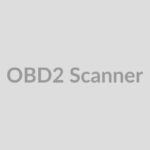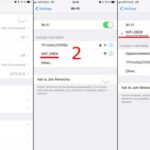Autel scanners are essential tools for anyone involved in vehicle maintenance, from car enthusiasts to professional mechanics. These devices, offered by a leading brand in automotive diagnostics, are designed to read and interpret data from your vehicle’s onboard computer system. This capability is crucial for identifying problems, performing necessary repairs, and ensuring your car operates efficiently. Understanding how to use an Autel OBD2 scanner is the first step towards taking control of your vehicle’s health.
Whether you’re a DIY enthusiast or a seasoned technician, Autel offers a range of scanners to meet various needs and budgets. From handheld models to sophisticated flatbed and Bluetooth-enabled devices, Autel scanners support OBD I and OBD II protocols and utilize wired, Bluetooth, or Wi-Fi connections. This versatility allows them to effectively scan and diagnose a wide array of diagnostic trouble codes (DTCs) that your car’s computer might generate.
Understanding Your Need for a Scanner
Before diving into the “how-to,” it’s important to recognize why an OBD2 scanner is a valuable tool. Autel scanners empower you or your mechanic to quickly assess your vehicle’s condition. This proactive approach can lead to timely maintenance and prevent minor issues from escalating into major, costly repairs. The Autel product line includes popular series like MaxiSYS, MaxiCheck, and AutoLink, each designed to address different diagnostic needs. If you’re wondering how to use Autel MaxiSYS series scanners or how to use Autel MaxiCheck series scanners, the fundamental steps outlined below will provide a solid foundation.
Step-by-Step Guide: Using Your OBD2 Scanner
Using an Autel OBD2 scanner is a straightforward process, even for beginners. Follow these steps to effectively diagnose your vehicle:
Step 1: Locating the Diagnostic Link Connector (DLC)
The first step in using your Autel OBD2 scanner is to find your car’s Diagnostic Link Connector (DLC), also known as the OBD2 port. For all vehicles manufactured after 1996, this port is standardized and is typically a 16-pin connector.
You can usually find the DLC on the driver’s side of the dashboard, beneath the steering column. It’s often located under a protective cover or bezel. If you’re unsure of its exact location, your vehicle’s owner’s manual will provide a precise diagram and description.
Step 2: Connecting the OBD2 Scanner to the DLC
Once you’ve located the DLC, ensure your vehicle’s ignition is turned off before proceeding with the connection.
Take the OBD2 connector cable and plug one end into your Autel scan tool and the other end firmly into the DLC port in your car. If you are using a Bluetooth OBD2 scanner, you may directly plug the Bluetooth adapter into the OBD II port.
Next, consult the instructions that came with your specific Autel scanner model. Some scanners require the car to be in the “ON” position (ignition turned on, but engine not running), while others might need the engine idling. Following the correct procedure is crucial to avoid any potential damage to your scanner or your vehicle’s electronic systems. A successful connection is usually indicated by a message on your Autel scanner’s screen confirming communication with the vehicle’s computer.
Step 3: Inputting Vehicle Information on the Scanner
Modern vehicles are identified by a unique Vehicle Identification Number (VIN). Depending on the Autel scanner you are using, you may be prompted to enter the VIN before it can initiate a diagnostic scan and retrieve OBD2 codes.
In addition to the VIN, the scanner might request other vehicle-specific details, such as the engine type, model year, and trim. This information helps the scanner accurately interpret the data it receives from your car’s computer.
Finding Your VIN: The VIN is typically located in several places on your vehicle. The most common location is on the dashboard, visible through the windshield on the driver’s side. You can also find it on a sticker inside the driver’s side doorjamb, under the hood, or on your vehicle’s registration and insurance documents.
Step 4: Navigating the Scanner Menu for OBD Codes
After the scanner is connected and vehicle information is entered, you will navigate to the main menu on your Autel scanner’s display. Look for options related to diagnostics, code reading, or OBD codes.
Select the appropriate menu option to initiate a scan of your vehicle’s systems. The scanner will typically allow you to choose to scan all systems or select specific systems, such as the engine, transmission, or ABS. Once the scan is complete, the scanner will display any active and pending diagnostic trouble codes (DTCs).
Active vs. Pending Codes: It’s important to understand the difference between active and pending codes. Active codes indicate current issues that are causing the check engine light to illuminate. Pending codes, on the other hand, suggest potential problems that have been detected but have not yet triggered the check engine light. Pending codes can become active codes if the issue persists or recurs.
Note that the display and menu options can vary slightly depending on your specific Autel scanner model. Some scanners may automatically display all DTCs, while others may allow you to select which types of codes to view.
Step 5: Interpreting OBD Codes
Once the OBD codes are displayed, the next crucial step is to understand what they mean. OBD codes are standardized and follow a specific format. Each code begins with a letter followed by four numerical digits.
Decoding the DTC Letters:
- P (Powertrain): These codes relate to issues within the engine, transmission, ignition system, fuel system, and emission control systems.
- B (Body): B codes indicate problems with body-related systems, such as airbags, power windows, power seats, and security systems.
- C (Chassis): C codes refer to issues with the chassis systems, including the anti-lock braking system (ABS), suspension, and steering.
- U (Network/Undefined): U codes signify communication issues within the vehicle’s computer network or issues that don’t fall into the P, B, or C categories.
Decoding the DTC Numbers: The four digits following the letter provide more specific information about the problem:
- First Digit (after the letter): Indicates whether the code is generic (0) or manufacturer-specific (1). Generic codes are standardized across all manufacturers, while manufacturer-specific codes are unique to a particular vehicle brand.
- Second Digit: Refers to the specific vehicle system or subsystem affected (e.g., fuel and air metering, ignition system, auxiliary emission controls).
- Last Two Digits: Pinpoint the exact nature of the problem within the identified system or component.
It’s essential to record the displayed OBD codes accurately. After noting down the codes, turn off your vehicle’s ignition and disconnect the Autel OBD2 scanner. Many Autel scanners offer the ability to transfer diagnostic data, including OBD codes, to a computer via USB or Bluetooth for easier analysis and record-keeping.
If you encounter difficulties in interpreting the live data or understanding the OBD codes, seeking assistance from a qualified mechanic is always a prudent step.
Step 6: Diagnosing and Addressing Trouble Codes
An Autel OBD scanner provides valuable information by identifying trouble codes, but it doesn’t tell you the exact fix. The OBD code is a starting point for further diagnosis.
You’ll need to investigate further to determine the root cause of the problem indicated by the code. This might involve consulting repair manuals, online resources, or seeking professional advice to accurately diagnose the issue and determine the necessary repairs. You can then decide whether to undertake a DIY repair approach or seek professional assistance from a certified mechanic. For complex issues or if you lack automotive repair experience, consulting a professional is highly recommended to avoid potential mistakes that could lead to further damage or increased repair costs.
Step 7: Resetting the Check Engine Light
Once the underlying issue causing the trouble code has been resolved, the check engine light should eventually turn off on its own after a certain number of drive cycles. However, you can use your Autel OBD2 scanner to manually reset the check engine light immediately.
Navigate to the main menu of your Autel scanner and look for an option like “Reset,” “Clear Codes,” or “Check Engine Light Reset.” Select this option and follow the on-screen prompts to clear the DTCs. After a few seconds or minutes, the check engine light should turn off.
Important Note: Resetting the check engine light only clears the indicator; it does not fix the underlying problem. If the issue persists, the check engine light will illuminate again. Therefore, it’s crucial to address the root cause of the problem and not just rely on resetting the light.
Common Features of Autel Scanners
Autel scanners are renowned for their comprehensive features that go beyond basic code reading. Standard features commonly found in Autel scanners include:
- Read and Clear Codes: Allows you to read diagnostic trouble codes (DTCs) and clear them after repairs are made.
- Live Data Stream: Displays real-time data from various vehicle sensors and systems, helping you monitor performance and identify anomalies.
- I/M Readiness Status: Checks the status of emission-related systems to ensure your vehicle is ready for emissions testing.
- Freeze Frame Data: Captures a snapshot of sensor data when a DTC is triggered, providing valuable context for diagnosis.
- O2 Sensor Test: Tests the functionality of oxygen sensors, critical components in emission control.
- On-Board Monitor Test: Checks the performance of on-board diagnostic monitors.
- Component Testing: Some Autel scanners offer component testing capabilities to activate and test individual components.
- Vehicle Information Display: Provides access to essential vehicle information such as VIN, Calibration ID (CID), and Calibration Verification Number (CVN).
Higher-end Autel scanners often incorporate advanced special functions, such as:
- Oil Reset: Resets the oil life monitoring system after an oil change.
- EPB (Electronic Parking Brake) Service: Assists in servicing electronic parking brake systems, including brake pad replacement.
- SAS (Steering Angle Sensor) Calibration: Calibrates the steering angle sensor after steering or suspension work.
- BMS (Battery Management System) Service: Allows for battery registration and reset after battery replacement.
- ABS Brake Bleeding: Performs ABS brake bleeding procedures.
- DPF (Diesel Particulate Filter) Regeneration: Initiates DPF regeneration to clear soot buildup in diesel vehicles.
- Active Test/Bi-directional Control: Enables you to send commands to vehicle systems to test components and functions.
- Battery Testing: Performs comprehensive battery health tests.
By understanding how to use an Autel OBD2 scanner and leveraging its features, you can effectively diagnose and maintain your vehicle, ensuring optimal performance and longevity.

